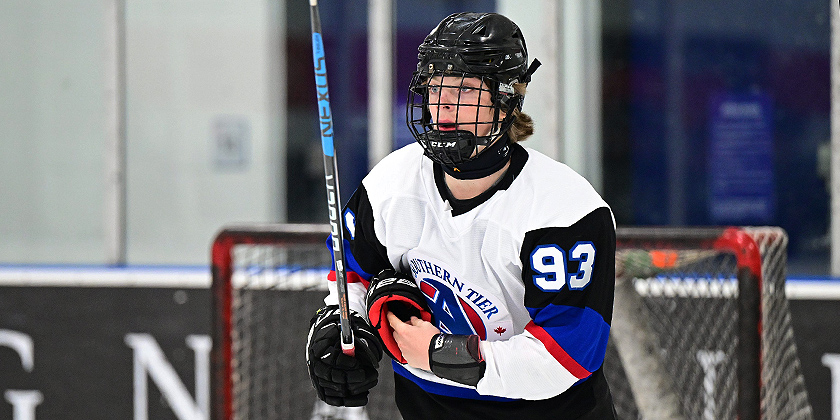
Noah Read (C, L, 6’0″, 172, London Knights, 01/06/2007)
Noah Read is a cerebral, pace-driven two-way forward who is quietly productive in a supporting role on one of the deepest rosters in the CHL. Despite limited usage—averaging under 12 minutes per game and minimal special teams time—he’s been efficient and effective, generating high-quality scoring chances at 5-on-5 and emerging in the OHL playoffs as a timely contributor. He possesses above-average skating mechanics, situational awareness, and a strong 200-foot mentality, but his limited strength and average puck skill ceiling could restrict his upside at the NHL level.
Why He Should Be an NHL Draft Pick:
- Efficient 5-on-5 Offense Despite Limited Minutes:
Read’s 1.42 grade “A” chances per game, generated exclusively at even strength, are elite relative to his 11:45 average TOI. He doesn’t need extended usage or power play minutes to make an impact—he finds soft ice, times his entries well, and consistently positions himself as a support option. His 15% conversion rate on those chances is above average, indicating a composed finish when given time and space. He also adds value in possession: 1.4 loose puck recoveries per game is a standout for a winger with limited minutes. - High-Level Skating and Transition Habits:
Read is a strong skater with efficient mechanics and powerful smooth stride. He gains separation through acceleration—not pure speed—and consistently puts himself in the right lanes. His defensive-zone routes are mature and refined, and he tracks back with purpose. On retrievals and breakouts, he anticipates pressure and moves pucks with a sense of timing. His 2.3 takeaways per game and +10 rating on a team with limited bottom-six minutes reflect his understanding of off-puck detail and awareness. - Playoff Production and Signs of Upside:
With 4 points (3G, 1A) through 4 playoff games, Read has proven capable of elevating when the stakes rise. He’s producing despite still being deployed behind a long line of NHL-drafted forwards in London, suggesting there’s offensive potential still untapped. His goals have come in varied ways: a rebound finish, a forehand curl-and-drag shot from the slot, and one off the rush—but on each he adjusted pace to time himself to receive the puck in in space.
Why He Might Not Be an NHL Draft Pick:
- Strength and Physicality Need Immediate Growth:
Despite being listed at 6’0”, 170 lbs, Read absorbs nearly one hit per game and only gives 0.3 hits per game. He’s losing too many physical exchanges (49% puck battle win rate), especially given that most of his ice time is against third and fourth lines. He doesn’t yet impose himself along the walls or below the goal line, and his frame needs to add 15–20 pounds before he’s physically ready for the pro level. - Below-Average Passing Touch and Puck Distribution:
His 82% passing success rate is below the benchmark for NHL-trending draft picks, and while he completes 0.62 grade “A” pass assists per game, many of these come from simple bump or slot feeds rather than manipulated plays. Read will likely remain a secondary puck mover at the next level. His 4 giveaways per game further highlight some issues with decision-making and composure when pressured—something he’ll need to improve to handle pro pace. - Undefined Offensive Identity:
While Read is versatile and dependable, his offensive ceiling is still in question. He currently doesn’t have an elite shot, isn’t dynamic off the rush, and doesn’t regularly drive the inside. He gets chances through timing and smart reads—not skill creation — which can be viewed as both a negative or positive. Without power play reps or signature traits, he projects more as a bottom-six energy winger with two-way reliability rather than a scoring driver.
Projection:
Read projects as a bottom-six energy winger with penalty-kill utility and even-strength secondary scoring touch, provided he adds strength and tightens his puck protection abilities. He’s a low-maintenance, system-trusting forward who plays the right way and contributes across all three zones. With increased opportunity next season in London, he could break out offensively and emerge as a more complete NHL prospect.
Draft Recommendation:
5th to 7th Round Grade – Late-Riser Candidate
Teams with deep forward pipelines may take a flyer on Read’s IQ, playoff production, and skating base. If he takes on a larger role next season and hits 60+ points, he could become one of the more valuable late-round picks in the 2025 draft.
Photo credit: Dan Hickling/Hickling Images
